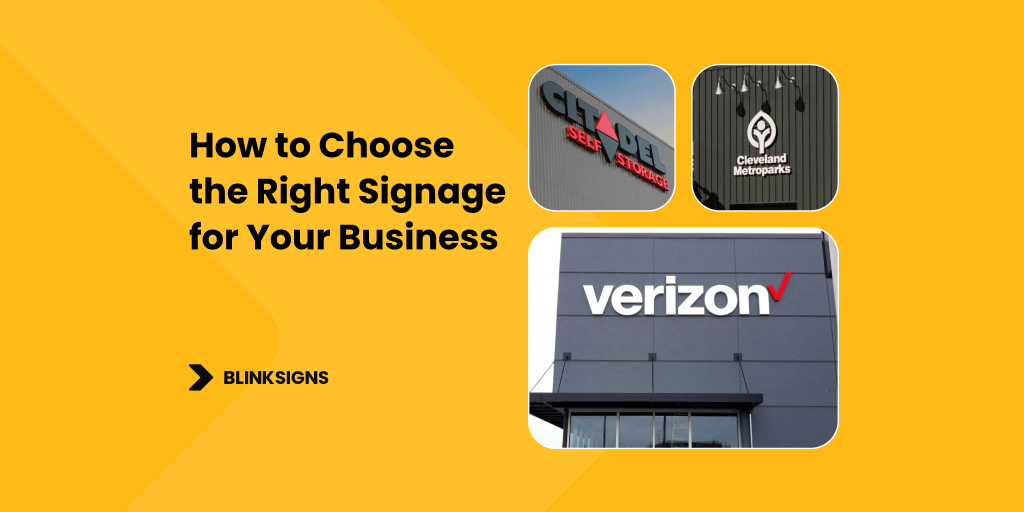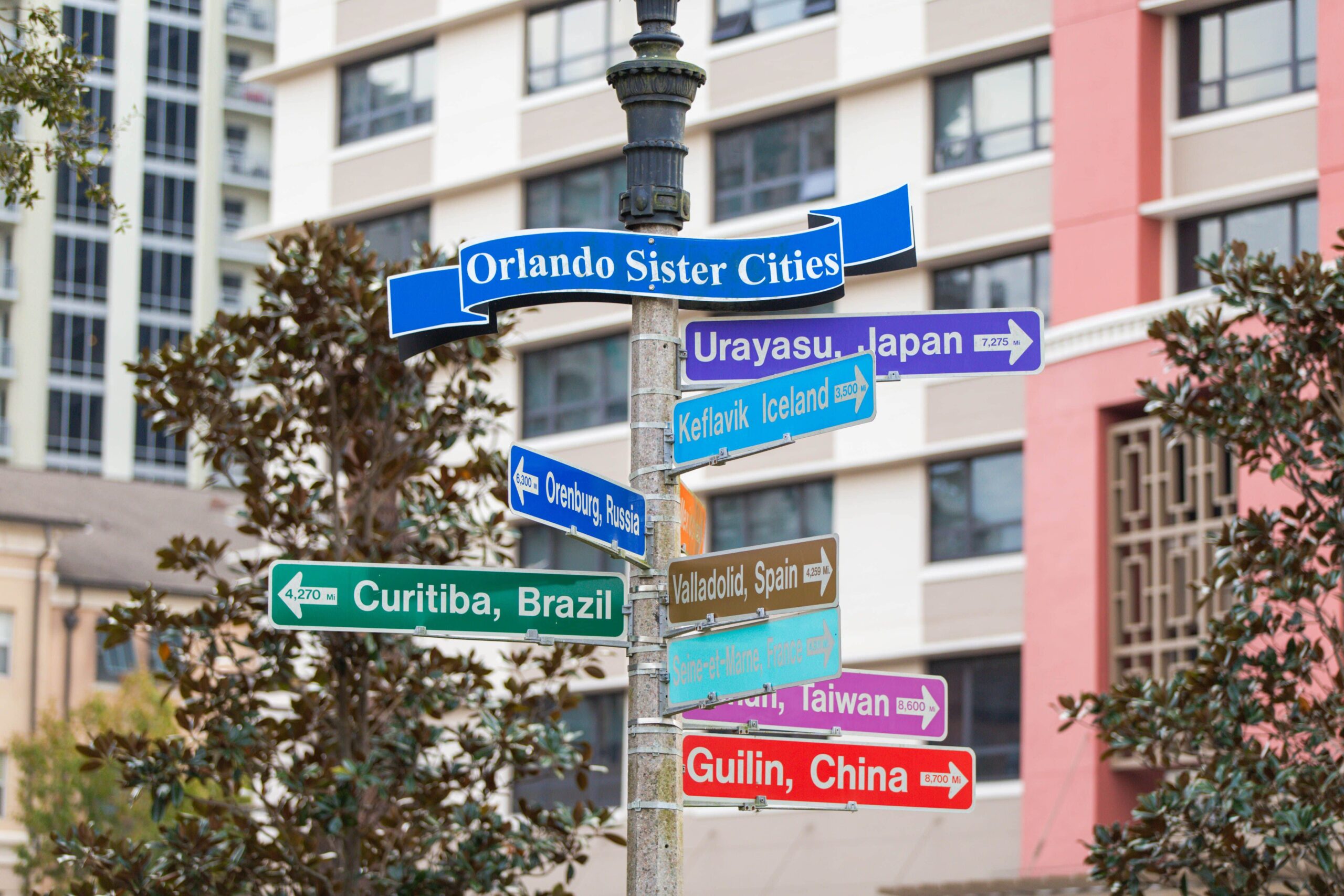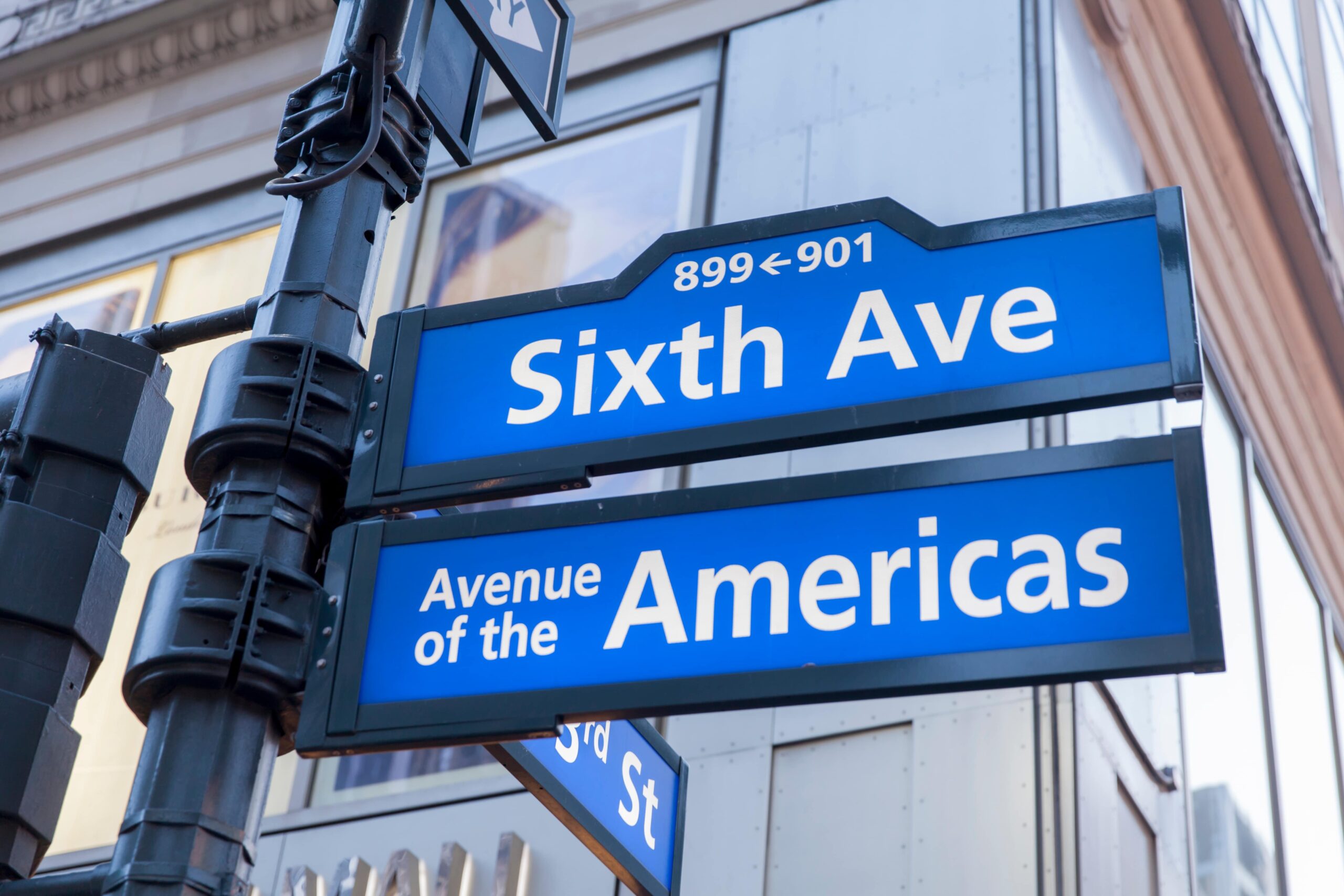
How to Choose the Right Signage for Your Business
- July 30, 2024
- Signage Industry News
- Asfand Yar Junejo
- 0 Comments
Choosing the right signage for your business involves understanding your needs and options. We’ll need to take into account the type of sign, such as traditional, interactive, outdoor or indoor. Placement is essential; it needs to be visible to your customer demographic.
Sign’s design should reflect your brand’s identity, incorporating relevant colors and typography. Remember to check local laws and regulations for signage. Consider also seasonal signage for promotions or events.
Financing, maintenance, and timing of signage changes must also be factored into the decision-making process. As we further explore, you’ll see how these elements come together to create effective signage.
Understanding Different Types of Signage

Understanding Different Types of Signage
Before we begin exploring selecting the perfect signage, it’s important we grasp the various types of signage available. Signage durability is vital, especially for outdoor signs constantly exposed to the elements.
Interactive signage, a digital alternative to traditional signage, allows for dynamic content, enhancing customer engagement. However, traditional signs still have their place, often offering a more cost-effective solution.
Signage lighting is another aspect to take into account. It can greatly enhance visibility, especially for indoor signs. The process of signage installation varies, and it’s important we choose an option that best suits our business needs.
We also have portable signage, which is an excellent choice for trade shows or seasonal promotions. Understanding these key elements will guide us in choosing the right signage.
The Importance of Location Selection
Having considered the various types of signage, we now need to focus on selecting the most suitable location for your signage, a key step in effectively reaching your target audience.
- Factors affecting visibility: We must make sure that the demographics of your customers can easily see your signs. This means considering the size, placement, and lighting of your signage.
- Traffic analysis: We’ll study the flow and frequency of people in potential locations to maximize exposure.
- Cultural considerations & Surrounding competition: We’ll evaluate the local culture and competition around the area to make sure your signage stands out and resonates with the locals.
- Accessibility issues, Zoning restrictions: Lastly, we’ll navigate any zoning restrictions and ensure the location is accessible for installation and maintenance.
Each of these factors helps ensure the right people see your signage at the right time.
Aligning Signage With Your Brand
We’re now shifting our focus to how signage aligns with your brand.
It’s essential to grasp your brand identity, maintain consistency in visual elements, and understand the impact signage has on public perception.
Let’s explore these points to make sure your signage is a seamless extension of your brand.
Understanding Your Brand Identity
How well do you know your brand’s identity, and does your current signage align with it? Understanding our brand identity is pivotal in choosing the right signage. Here are four critical areas to ponder:
- Brand positioning: How does your signage reinforce your place in the market?
- Logo design: Does your sign accurately represent your logo’s design, supporting recognition and recall?
- Target audience: Is your signage appealing to the people you aim to reach?
- Brand voice: Does the tone of your signage match the voice of your brand?
Remember that your signage should also reflect your mission statements, core values, and brand story. That’s how we’ll ensure our signage doesn’t just stand out–it stands for something.
Consistency in Visual Elements
Maintaining consistency in visual elements on your signage is vital in aligning it with your brand. We must aim for visual uniformity, making sure that all elements harmonize to create a coherent design.
This graphic consistency is a key part of our branding continuity. It’s not enough to simply slap our logo on a sign; we’ve got to take into account the overall aesthetic integration.
Synchronized imagery and harmonized visuals will make our brand instantly recognizable and memorable.
With design coherence, we guarantee that our signage isn’t just attractive, but also truly representative of our brand.
Signage Impact on Perception
Building on the concept of visual consistency, it’s important to understand that the choice and design of our signage can greatly influence customer perceptions of our brand. Perception psychology plays a significant role in the way our brand is valued and perceived, impacting consumer behavior.
To align signage effectively with our brand, we’ve highlighted four key areas of focus:
- Perception influencing: Use impactful visuals and clear messaging to shape perceptions positively.
- Signage aesthetics: Guarantee your signage’s design and color scheme mirror your brand’s identity.
- Impact measurement: Regularly assess the effectiveness of your signage through feedback and perception studies.
- Negative impacts: Be aware of design pitfalls that could negatively affect perception, such as poor readability or unappealing imagery.
The Role of Color and Typography

Signage for your business
In selecting the right signage, we can’t overlook the importance of color choice and typography in conveying our brand’s message effectively. Color psychology plays a significant role,, as different colors evoke various emotional effects. Simple color combinations can enhance readability factors, while cultural considerations may dictate specific color choices.
Likewise, staying abreast of typography trends is essential. Your font selection, for instance, can either enhance or compromise the clarity of your message. It’s not just about what’s in vogue, but also about ensuring your chosen font resonates with your brand’s identity.
Regulatory Guidelines for Business Signage
Before we begin exploring the creation of attention-grabbing signage, we must also consider the regulatory guidelines governing business signage in our locality.
The important elements we need to keep in mind are:
- Signage Legislation: This encompasses the legalities surrounding signage creation and installation.
- Compliance Issues and Permit Requirements: We can’t overlook the necessity of complying with local laws and obtaining the necessary permits before installing our signs.
- Zoning Restrictions and Accessibility Considerations: These are essential to make sure our signage doesn’t infringe on any local zoning laws and is accessible to all potential customers.
- Safety Standards and Environment-Friendly Practices: Finally, our signage should adhere to safety standards and promote environment-friendly practices.
Seasonal and Promotional Signage Tips
Now, let’s shift our focus to another vital aspect: seasonal and promotional signage. We’ll explore how to understand and utilize seasonal signage effectively and share tips on designing compelling promotional signage.
We’ll also guide you on budgeting for your signs, timing your signage changes, and leveraging holiday periods to maximize your business’s visibility.
Understanding Seasonal Signage
We’ve got to grasp the importance of seasonal signage, which, with its timely and eye-catching designs, can greatly enhance your business’ visibility and customer engagement during key shopping periods. Seasonal trends impact the effectiveness of your signage, so it’s crucial to keep your designs fresh and relevant.
Here are four tips to maximize the impact of your seasonal signage:
- Use weather proof materials to guarantee your signage withstands seasonal elements.
- Craft seasonal messages that resonate with your audience and align with holiday themes.
- Integrate local events into your signage to foster community connection.
- Plan your signage installation timing to maintain seasonal relevance and maximize exposure.
Effective Promotional Signage Design
Creating compelling promotional signage requires a blend of creativity, strategic messaging, and keen attention to design details. Graphic simplicity is paramount and a clean, uncluttered design aids in audience engagement.
Regular signage maintenance guarantees your message remains clear and visible. Material durability is equally important, particularly for outdoor signs exposed to various weather conditions. Illumination techniques can enhance visibility, particularly in low-light conditions.
Consider mobile signage, too, for wider reach. Eco-friendly options are also available; they’re not only good for the environment but can also resonate well with today’s environmentally conscious consumers.
Budgeting for Business Signage
Having considered the design aspects of promotional signage, it’s equally important for us to examine how to effectively budget for these business signs, keeping in mind the variations that come with seasonal and promotional needs.
- Signage Financing: Evaluate funding options for your signs. These could range from self-financing to bank loans or leasing options.
- Cost Comparison: Do a thorough comparison of costs between different signage providers. This will help you find the most cost-effective solution.
- Maintenance Expenses and Unexpected Costs: Account for the upkeep of the signage and plan for unforeseen expenses that may arise.
- Return on Investment and Tax Implications: Consider the return you expect on your signage investment. Also, be aware of potential tax implications associated with purchasing or leasing signage.
Timing Your Signage Changes
Let’s explore the importance of timing your signage changes, a strategy that can greatly enhance your business during seasonal shifts and promotional periods.
Considering signage frequency, we must analyze visibility, guaranteeing our message pierces through the daily visual clutter. A thorough visibility analysis helps in deciding when to make digital shifts and when to stick with traditional signage.
Durability considerations are also key, as seasonal weather can greatly impact signage materials. Opt for durable materials during harsh conditions and lighter ones when the weather’s mild.
Don’t forget lighting effects, they can make your signage pop during darker hours.
Lastly, be conscious of maintenance needs. Regular upkeep ensures your signage stays fresh, relevant, and reflective of your brand’s dynamism.
Leveraging Holidays for Signage
Building on the idea of timing, we can take advantage of festive periods, like holidays, to enhance our signage’s appeal and effectiveness.
Here are four tips to leverage holidays for your signage:
- Holiday Customization: Modify your signage to reflect the spirit of the holiday. This could mean incorporating festive symbolism or using holiday-themed sales pitches.
- Cultural Sensitivity: Guarantee your signage respects and acknowledges the diverse cultures that celebrate different holidays.
- Customer Engagement: Use holidays as an opportunity to engage customers with event-based signage. Promotions or contests can generate buzz.
- Seasonal Durability: If your signage is outdoors, make sure it can withstand the seasonal weather conditions.
Case Studies: Successful Signage in Action
To fully appreciate the power of effective signage, we’ll explore a few real-world examples of businesses that have reaped significant benefits from their signage strategies.
One such business highlighted the importance of signage longevity. Their outdoor sign, with its visual appeal and emotional connection, withstood the test of time, attracting customers for years.
Another case study showcased cultural relevance. They ingeniously integrated local motifs into their signs, which resonated deeply with the community.
One standout example demonstrated the power of online integration and niche targeting. Their digital signage included QR codes, linking to their online store and specifically targeting tech-savvy consumers.
Lastly, through competition analysis, one business successfully differentiated its signage, ultimately standing out in a crowded market.
Conclusion
We’ve journeyed through the vast world of signage, from understanding types to color psychology, and even regulatory guidelines.
Choosing the right signs for your business isn’t just important—it’s monumental. The right signage can transform your business into a beacon, drawing customers in like a lighthouse in a storm.
Remember, your sign isn’t just a marker; it’s the handshake that introduces your brand to the world. So make it a strong one with Blinksigns products and services.
Frequently Asked Questions
We’re considering material durability, signage lifespan, and maintenance costs. Installation expenses, customization pricing, upfront investment, and recurring charges also affect the cost of different signage materials. It’s about balancing initial costs with long-term value.
“We’d suggest changing your signage when it shows wear and tear. Branding updates, audience engagement, seasonal changes, event promotions, and location adjustments all call for visual freshness to keep your business in the spotlight.”
We’d certainly recommend it. A professional designer’s expertise brings design benefits, enhancing brand identity. Their creative approach guarantees aesthetic appeal. Plus, it’s cost-effective and time-efficient in the long run.
Blinksigns keen on sustainable materials like recycled signage or biodegradable options. Green certification guarantees low impact manufacturing. Considering energy efficiency, we’d suggest solar powered signs. They’re eco-friendly and good for business, too.
We’ve seen digital signage boost engagement and enhance visibility. It’s interactive marketing at its best, improving the customer experience with real-time updates. Technology integration allows for dynamic content, keeping things fresh and attention-grabbing.